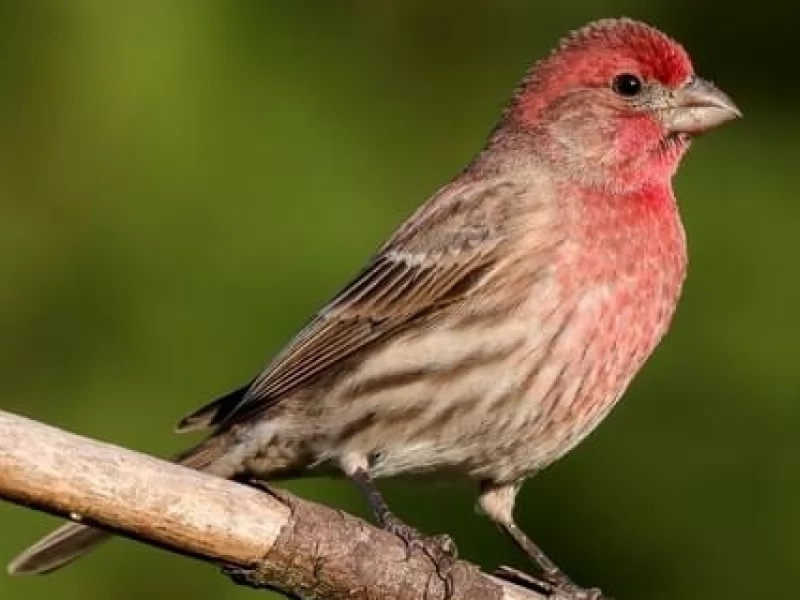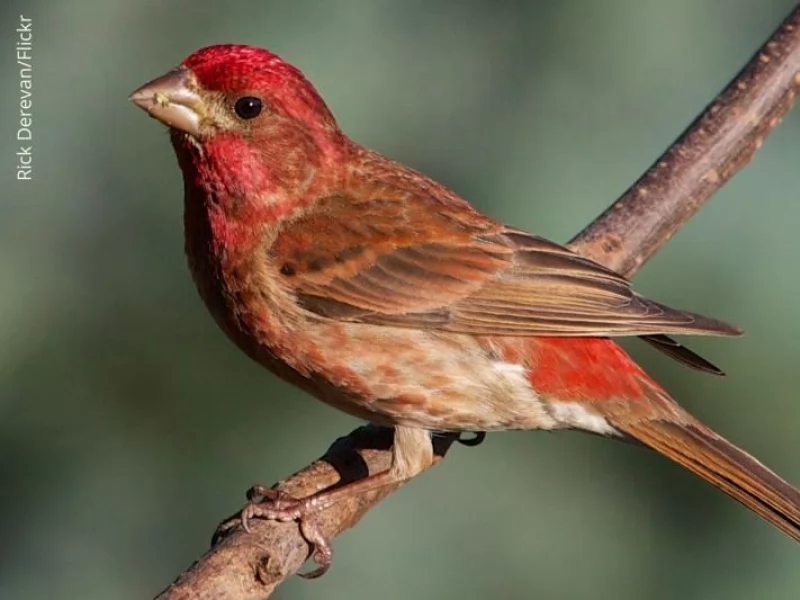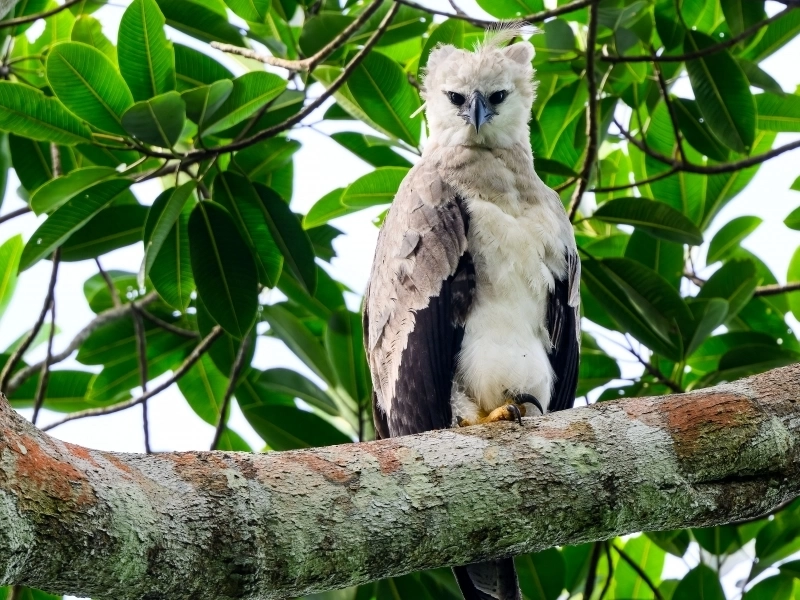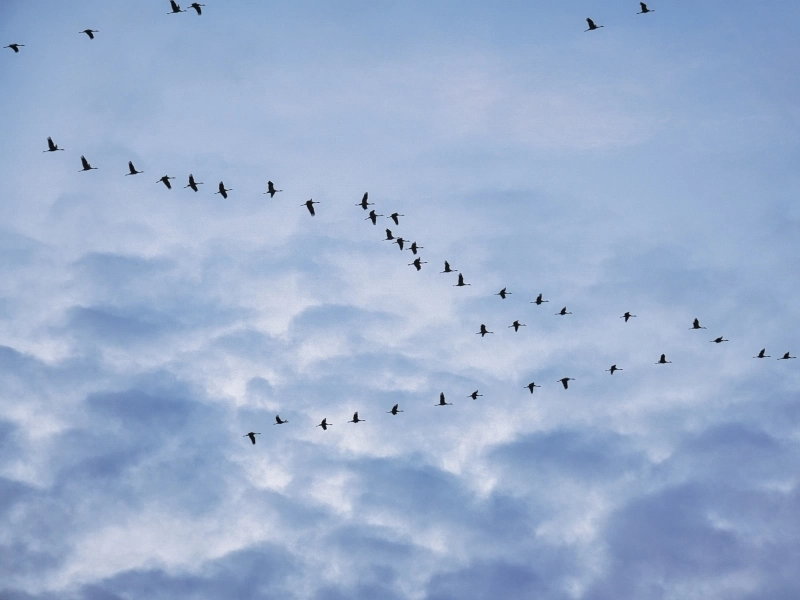News and Testimonials
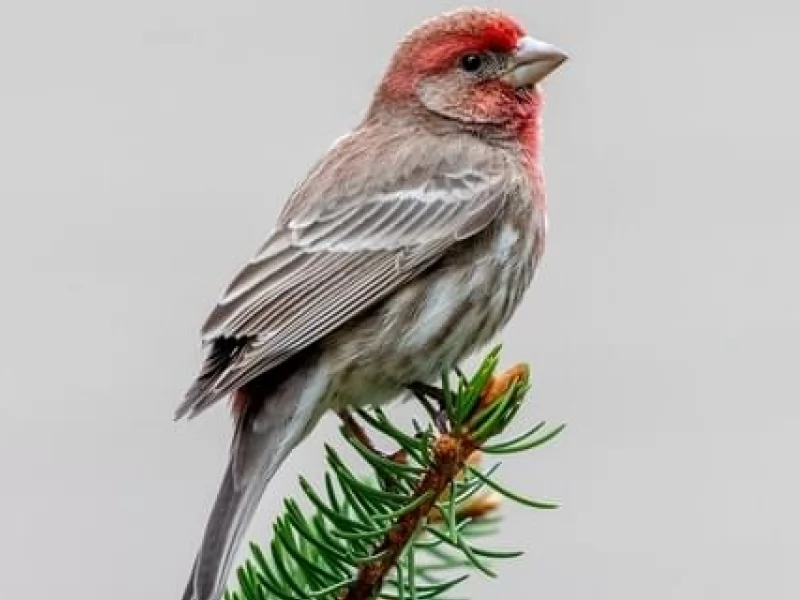
How to Identify Small Red Finches
Winter is finch season, when those northern nomads sweep down in raiding parties, show up without warning, stay for an hour or a week, and disappear. They are movers, unpredictable, edgy, always peeking over the horizon.
The very inconsistency of finches is one of their greatest attractions. For most bird watchers, there is a spurt of adrenaline when the feeder is suddenly commandeered by evening grosbeaks or pine siskins, or when crossbills put in their not-quite-believable appearance. Chickadees and juncos and downy woodpeckers carry their own brand of pleasure, a comfort born of knowing they are always there, but it is the unexpected that brings a smile to our faces.
There are one or two exceptions, just as you would expect from the unexpected. House finches are ubiquitous and predictable, showing up regularly at nearly every feeder on the continent. Goldfinches, which have their own society and movements, can almost be counted on to appear at certain seasons.
Perhaps it is because we see them so irregularly that many of the finches make us pause, momentarily stymied. What is that thing? Sure, five years ago there was a flock at the feeder for a week, and an instant submersion into finch identification, but since then, nothing. Memory fades and becomes clouded by information and the passage of time. You know that one of them had wing bars, or streaks, or an eye patch, but which one?
In this article we’ll examine the visual clues that help identify a group of birds that might be called the small red finches. These are house finch, purple finch, Cassin’s finch, common redpoll, and hoary redpoll. The pine siskin is also included here because it can be confused with the females of some of these species. While these species might not be terribly difficult to tell apart, they may be a bit puzzling.
There is no easy way to break finches into groups for the purpose of discussing identification. Size doesn’t help. Neither does likelihood of occurrence, because almost anything can appear anywhere. The only solution is to compare those closely related species that are most likely to cause confusion, and throw in an occasional caution about unexpected similarities.
The Haemorhous Finches
Haemorhous is the Latin name for the genus that includes house, purple, and Cassin’s finches, and many bird watchers use the term to avoid having to mention all three each time.
These three are the ones that cause the most identification problems for bird watchers. Although they’re nomadic, they are more common than most of the other finches. All three species can be found at the same feeders in some parts of North America, and they look almost alike.
Two decades ago the house finch wasn’t even an issue in most of the East, but these birds have spread like, well, finches, and now they are found almost everywhere in the United States. Originally native to the West, eastern house finches started as a fairly small population. As sometimes happens in a limited gene pool, small variations in plumage can spread quickly. As a result, it was fairly common a decade ago to see house finches in the East with big white patches in the wings, a widespread partial albinism. It has died out to a great extent, but it is still possible to find a house finch with white in the wings, and observers should be on the lookout for those individuals. A similar outbreak of partial albinism has occurred in the Pacific Northwest in recent years, although it does not seem to be as common or widespread.
In most of the country, the simplest way of identifying the less common purple and Cassin’s finches is to start with the house finch and look for differences. In the East, the problem is simpler because there are only, house and purple finches to worry about. Both males and females are fairly easy to tell apart if you get a decent look.
Male purple finches are wine red, or purple-red, compared to the house finch’s fire engine red. Many male house finches are pale red, and those are even easier to recognize. The most distinctive difference is that male house finches are streaked with brown on the sides and belly, and the streaks seem to run right into the red on the breast. Male purple finches are white on the belly, with broad red blotches coming down onto the flanks. Purple finches are also more red on the head and upper back than house finches, lacking the house finch’s distinct red forehead band that contrasts with its darker crown.
Females
Females are more difficult to identify, but are still fairly distinctive. Female house finches are basically plain brown birds. Their underparts are light to medium brown, with blurry brown streaks not much darker than the color of the breast. The head is brown with brown crown streaks; the back is darker brown with blurry brown streaks. The female house finch is a plain brown, streaky bird, more apt to be mistaken for a sparrow, or a female indigo or lazuli bunting, than anything else.
In comparison, female purple finches are contrasty brown and white birds. Their underparts are white with bold, contrasting brown streaks. The head and upperparts are dark brown, with a strong pale eye line and a contrasting pale whisker streak. This head patterning is quite unlike that of any house finch.
In invasion years in the East, purple finches may reach the Deep South in large numbers. For the most part, however, they are considered something of a special bird anywhere south of the northern tier of states. They might join house finches at the feeder sometimes, but the house finch is a very domineering species; if there are a lot of house finches around, the purples rarely stay long.
Along the West Coast, observers usually have the same house versus purple finch problem. The characters are the same, although western female purple finches are somewhat duller and the plumage streaking is a little blurrier, which makes the differences between females of the two species a little less pronounced. Even western purple finches have a stronger face pattern than house finches, however, and in all parts of the range, the purples’ strongly notched tail can help separate it from the square-tailed house finch.
In the interior West from the Great Basin through the Rocky Mountains, the problem is usually separating house finch from Cassin’s finch, a high-elevation bird that sometimes moves downslope in winter. The differences between house and Cassin’s are the same as those between house and purple, especially in females. Cassin’s shows a much stronger face pattern than house, more contrast and bold streaking on the underparts, and a notched tail. The males are even easier to separate, because Cassin’s have a deep red cap and are a paler, almost rose-colored red on the breast and face. Some male Cassin’s do have brown streaks on the sides, below the red; these are darker, more distinct, and more restricted than those on house finches. All Cassin’s finches have distinctly streaked undertail coverts.
The biggest identification challenge in this group is separating purple and Cassin’s finches in the West. They rarely overlap, even in winter, but when they do, the females can be a tough call. The males are easily identified because of the Cassin’s contrasting red cap and brown streaking below, but the females are very similar.
The best characters for separating female Cassin’s and purple finches are the head pattern, the bill, and the undertail coverts, and absolute confidence sometimes requires seeing all of them. On average, female Cassin’s have a duller face pattern than female purple finches about halfway between the strong contrast of a purple and the plain face of a house. The eye line is present but not as distinct as it is on the purple, and the ear patch is not set off as strongly. The bill may be useful, but it requires a close look and usually a direct comparison between the two — and the difference is often not apparent at all. The bill of Cassin’s is slightly longer than the bill of purple, and the upper ridge appears quite straight. The bill of purple finch is shorter, and the upper ridge is slightly curved.
The main character that separates the two females is the undertail coverts, which can be hard to see. (Not as hard as it is on the redpolls, though.) The undertail coverts of Cassin’s finches are heavily streaked with brown, and the undertail coverts of purple finches are white and contrast with the rest of the underparts. Even if you don’t get a great look, the difference in this area should be relatively obvious.
Pine Siskin
The pine siskin is a small, brown, streaky finch that superficially resembles females of some of the other small finches. It is smaller than any female finch it might be confused with, small enough to be distinctively so. It also has wing bars, mostly white but sometimes tinged with yellow, and a yellow patch on the wing and at the base of the tail. The most striking feature is the bill, which is so small and thin that it is hard to believe that the pine siskin is actually a finch.
True to their finch nature, siskins are also irruptive. Some years they are in short supply, and some years they seem to be everywhere. In winter they usually travel in flocks, and from below you can recognize them as siskins by the bright pale stripe that shows on both sides (top and bottom) of the wing.
At feeders, they tend to associate with goldfinches and to prefer thistle or Niger seed. When people pass over a siskin, it is usually because they think it’s a sparrow. But no sparrow has the yellow patch on the wing, and most sparrows have a visibly larger bill than a siskin. Also, few sparrows have the fluttery, quick, darting habits of a siskin. Siskins may feed on the ground like sparrows, but they always seem to be on the move and usually prefer to stay in the trees. They almost always announce their presence with a loud rising zzziiipp!! call.
Redpolls
Redpolls are close to being most bird watchers’ favorite winter finch. Every few years they pour out of the Arctic in late fall, and rather than stopping at the United States–Canada border they just keep going, in swirling flocks of tiny, pale, unwary, chittering birds that gather in fields, on roadsides, and at feeders. Waking to find a flock of redpolls at the feeder makes the winter for most people.
It is not difficult to decide that you have redpolls. Telling which kind is a task for the truly dedicated.
The only birds you are likely to confuse with redpolls are house finches. This confusion was more common when house finches were new to the East, but now that they are everywhere (and a pest as far as many people are concerned) the mistake is rarer. Redpolls are small, pale, red-capped, and have a black chin that contrasts against pale underparts. Some females and young birds are so heavily streaked below that they almost resemble house finches, but even on these birds the red cap is distinctive.
The bill is a dead giveaway. Redpolls have the smallest bills of any finch. In fact, they have, proportionately, the smallest bills of almost any bird you will see. The bill, along with the red cap (or “poll,” which is where they get the name), gives them a dapper appearance that is not easily forgotten.
So Much for the Easy Part
Unfortunately, there are two kinds of redpolls. Actually, some scientists think there may be more. For the time being, two is more than enough.
As befits the name, the common redpoll is the common one, at least in the parts of North America that all but a few observers ever see. In winter, the vast majority of birds that move south are common redpolls.
Hoary redpolls are the more consistently northern, but a few birds do come south with their cousins, and this is when identification gets tough. Separating common and hoary redpolls is a massively difficult problem, confounded by age, feather wear, sex, subspecies, and variation. Ten-page technical articles have been written on the problem, and even if you’ve red (and understood) them, there are birds that refuse to be easily categorized.
The problem is picking out the occasional hoary redpoll from the flock of commons. There are a few general guidelines and one very-hard-to-discern character.
As a rule, hoary redpolls are bigger than common repolls. The difference may be only a quarter of an inch on average, but on a bird five inches long, it shows. Of course, common redpolls vary in size.
Hoary redpolls are also typically paler than commons. Many commons are dark (almost as dark as house finches) but some male commons can be quite pale. The palest hoary redpolls are nearly white all over, with just a faint blush of red on the breast, a condition rarely achieved by common redpolls.
The bills of common redpolls are small, but the bills of hoary redpolls are just plain tiny — so short that they give the face a punched-in look.
Although there is overlap in all characters, any big frosty-looking redpoll with a ridiculously small bill is probably a hoary. To get past probably, you have to see the undertail coverts. Seeing the undertail coverts can be easier than you think, because redpolls sit upright on the feeder and on small branches. If you get a good look, you will notice that the undertail coverts of common redpolls are streaked and the undertail coverts of hoary redpolls are plain. This is the deciding character, but even here, caution is in order. Common redpolls may have only one or two streaks on the undertail coverts, and hoaries may have a single streak. Some hoaries can even have more than one streak, and those birds are almost always passed off as common redpolls, even by experts.
There is no simple way to solve the redpoll problem. If you think you have a hoary, and really want to be sure, you need to search a good library for articles about redpoll identification and plan to settle in for some intensive study.
Finches are a highlight for many bird watchers, the reward for enduring the long slow days of winter. They are unexpected, a treat that comes without warning and leaves just as quickly. They are nomads, reminding us that there is more to the mystery of migration than a hummingbird flying across the Gulf of Mexico or a warbler making it from the northern boreal forests to the tropics. There is something determined, almost humorless in the demeanor of the birds that leave us in the fall. Then winter comes, the snow falls, the wind whips, and the finches arrive, chattering gangs in swirling and dodging, their cheerfulness in the face of the worst nature can offer lifting our own spirits as well.
Source: https://www.birdwatchersdigest.com/bwdsite/solve/faqs/how-to-identify-small-red-finches.php

